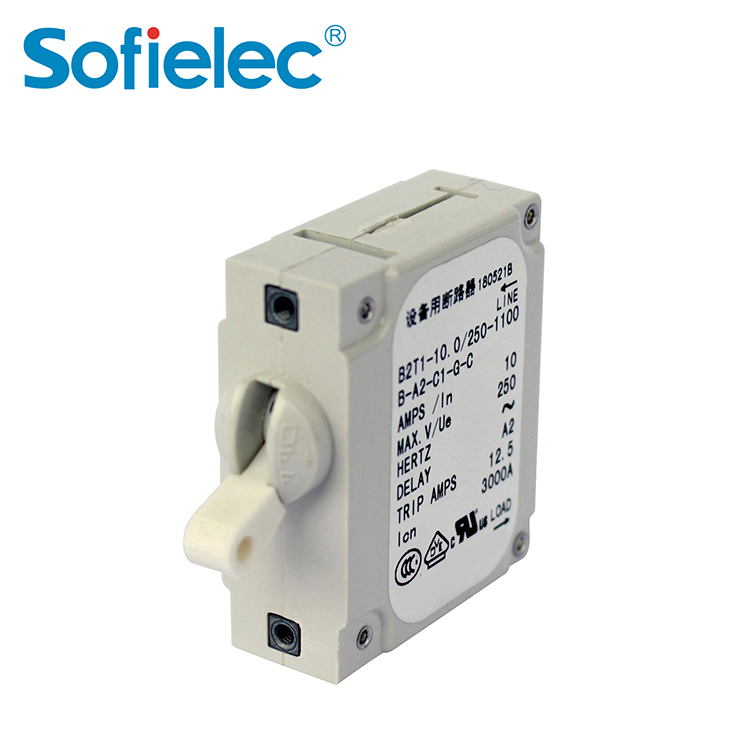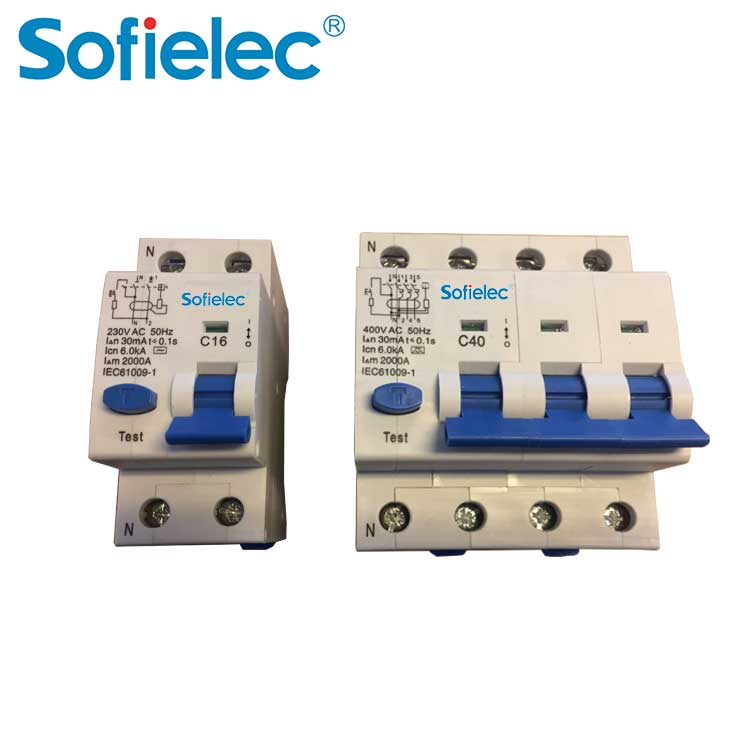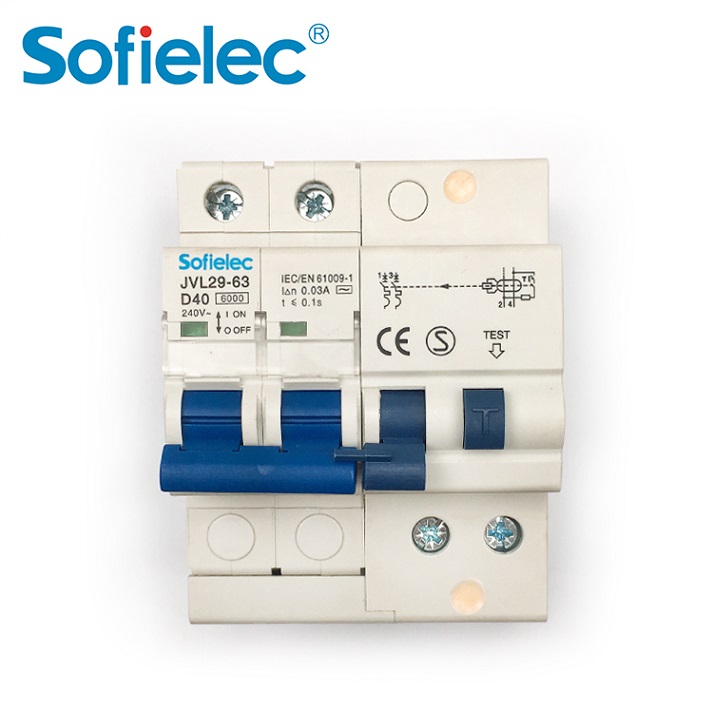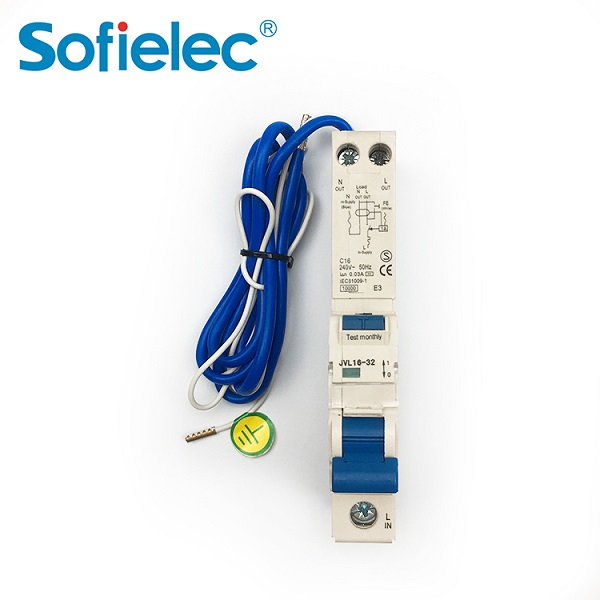| Categories | Hydraulic electromagnetic circuit breaker |
| Model | B2 |
| Maximum voltage | 277V AC 50/6Hz,80V DC |
| Current Ratings | 1A to 50A |
| Insulation resistance | Minimum of 100 Megohms at 50V DC |
| Operating Temperature | -40℃ to +85℃ |
| Number of poles | 1,2,3 |
| Weight | Approximately 65grams/pole |
| Agency Certifications | EN60934,UL1077,GB17701,and UL489A |
| Electrical | see table below |
| SERIES | B2 SERIES |

| Type | Voltage Max.Rating Ue(V) | Frequency(Hz) | Phases | Minimum number of poles | Rated Current ln(A) | Short Circuit Capacity(Amps) | |||
| UL/CSA | VDE/TUV/VVV | ||||||||
| Without Backup Fuse | With Backup Fuse | Without Backup Fuse | With Backup Fuse | ||||||
| B3 | 65 | DC | -- | 1 | 1~50 | -- | 7500 | -- | 3000 |
| 80 | 1~50 | -- | 5000 | -- | 3000 | ||||
| 1~50 | |||||||||
| 250 | 50/60 | 1α3 | 1 | 1~100 | -- | 3000 | -- | 3000 | |
| 5000(1) | --- | -- | 3000 | ||||||
Note:(1) Use back-up protectors of no more than 60A
Time Delay Values:Seconds
| Delay Type | 1ln | 1.25ln | 2ln | 4ln | 8ln |
| D0 | No trip | May Trip | Max 0.06 | Max 0.018 | Max 0.017 |
| D1 | No trip | 0.5-6.5 | 0.1-1.2 | 0.03-0.5 | 0.004-0.1 |
| D2 | No trip | 3.0-60 | 1-12 | 0.15-2 | 0.008-0.5 |
| D3 | No trip | 70-700 | 15-150 | 2-20 | 0.018-0.5 |
| A0 | No trip | May Trip | Max 0.06 | Max 0.022 | Max 0.017 |
| A1 | No trip | 0.7-12 | 0.13-3 | 0.03-1 | 0.01-0.15 |
| A2 | No trip | 10-120 | 2-20 | 0.2-3 | 0.015-0.8 |
| A3 | No trip | 70-700 | 10-150 | 1.5-20 | 0.013-0.85 |
| H1 | No trip | 0.5-6.5 | 0.18-2.3 | 0.05-0.6 | 0.18-0.22 |
| H2 | No trip | 1.5-50.0 | 0.5-10 | 0.10-2 | 0.09-1.4 |
| H3 | No trip | 45-345 | 8.5-100 | 1.2-15 | 0.256-8.0 |
| G1 | No trip | 0.7-12 | 0.18-2.3 | 0.05-0.6 | 0.018-0.2 |
| G2 | No trip | 7.0-100 | 1.1-18 | 0.2-3 | 0.075-1.2 |
| G3 | No trip | 50-700 | 12-150 | 1.5-20 | 0.4-7.9 |
B2 and B3 Delay Curve Diagram



Specification of B2 series circuit breaker and code implication(for selection)

B2 Series Circuit Breaker - Form&Fit Drawings







> What is mccb and mcb?
MCCB, for large - scale industrial and commercial use, handles high - current loads, detecting over - currents with thermal - magnetic or electronic trip units. MCB,...
> Is Circuit breaker AC or DC?
Circuit breakers can be designed for both AC (alternating current) and DC (direct current) applications. However, AC and DC circuit breakers have some differences in...
> How to use Circuit Breaker?
Select a suitable circuit breaker based on circuit requirements, install it in the electrical panel after power - off, let it monitor current during normal operation...
> Market Prospect Analysis of Circuit Breakers
The circuit breaker market has witnessed steady growth over the past few years, driven by the expansion of power infrastructure, industrial automation, and the burge...









